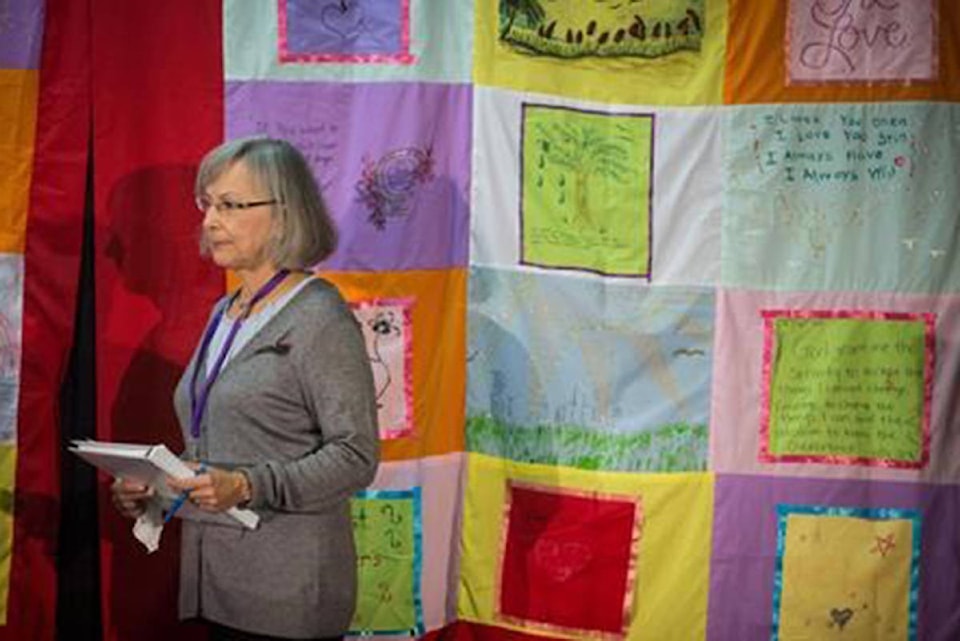The chief commissioner of the inquiry into missing and murdered Indigenous women and girls told survivors and families on Monday they have started to rewrite Canadian history.
While speaking at a ceremony at the Canadian Museum of History in Gatineau, Que., former B.C. judge Marion Buller said she and her fellow commissioners are holding up a mirror to the country, reflecting what they heard from more than 2,300 people over two years of cross-country public hearings and work to gather evidence.
“Your truths cannot be unheard,” Buller told hundreds gathered in the grand hall of the museum, including Prime Minister Justin Trudeau.
The ceremony marks the release of the much-anticipated inquiry report, which contains more than 200 recommendations to multiple levels of government.
It calls the violence against First Nations, Metis and Inuit women and girls a form of “genocide” and a crisis “centuries in the making.”
“These abuses and violations have resulted in the denial of safety, security, and human dignity,” the report says.
It also has calls for action in areas including justice and health, including that health-service providers develop programs that could help young people recognize the signs of being targeted for exploitation.
Watch live: the National Inquiry into Missing and Murdered Indigenous Women and Girls presents its final report at a closing ceremony. https://t.co/CYI5ohyZT6 pic.twitter.com/L6ktQEFVgd
— CanadianPM (@CanadianPM) June 3, 2019
Crown-Indigenous Relations Minister Carolyn Bennett, Indigenous Services Minister Seamus O’Regan and numerous other officials and advocates are also at the ceremony.
The report, the culmination of a three-year effort often beset by controversy, delays and personnel problems, documents what Buller calls “important truths” — including that Canadian laws and institutions are themselves to blame for violating the human rights of Indigenous Peoples.
“I hope that knowing these truths will contribute to a better understanding of the real lives of Indigenous people and the violations of their human and Indigenous rights when they were targeted for violence,” Buller writes in the report.
She also makes a point to acknowledge potential criticisms.
“Skeptics will be fearful and will complain that the financial cost of rebuilding is too great, that enough has been done, that enough money has been spent,” Buller writes.
“To them I say, we as a nation cannot afford not to rebuild. Otherwise, we all knowingly enable the continuation of genocide in our own country.”
The steps necessary to “end and redress this genocide” must be no less monumental than the combination of systems and actions that have been used to ”maintain colonial violence for generations,” the commissioners say.
The recommendations — framed in the report as “calls for justice” — include developing an effective response to human trafficking cases and sexual exploitation and violence, including in the sex industry. They are not optional, but constitute legal imperatives, the report says.
Additional calls include the need to establish a national Indigenous and human rights ombudsperson and a national Indigenous and human rights tribunal.
It also recommends the development of a national action plan to ensure equitable access to employment, housing, education, safety, and health care, as well as long-term funding for education programs and awareness campaigns related to violence prevention.
ALSO READ: Emotional ceremony to mark release of inquiry report on Indigenous women, girls
ALSO READ: Missing, murdered women inquiry urges review of justice system policies
The report also strongly focuses on the need for actors in the justice system and in police services to acknowledge that the historical and current relationship with Indigenous women, girls, and two-spirit people has been largely defined by “colonialism, racism, bias, discrimination, and fundamental cultural and societal differences.”
“We further call upon all police services and justice system actors to acknowledge that, going forward, this relationship must be based on respect and understanding, and must be led by, and in partnerships with, Indigenous women, girls, and 2SLGBTQQIA (two-spirit, lesbian, gay, bisexual, transgender, queer, questioning, intersex, asexual) people.”
Missing and murdered Indigenous women are believed to number in the thousands in Canada, but the report says that despite the commission’s best efforts to quantify the extent of the tragedy, ”no one knows an exact number.”
In 2005, the Native Women’s Association of Canada created a database tracking cases and produced a 2010 report documenting 582 missing and murdered Indigenous women. In 2014, the RCMP released a national overview and pegged the number of cases between 1980 and 2012 at nearly 1,200. Other unverified estimates are far higher.
Responding to the conclusions is the responsibility not only of federal and provincial governments and law enforcement agencies, but all Canadians in both the immediate and long-term, the report says.
“Individuals, institutions, and governments can all play a part … We encourage you, as you read these recommendations, to understand and, most importantly, to act on yours.”
Kristy Kirkup, The Canadian Press
